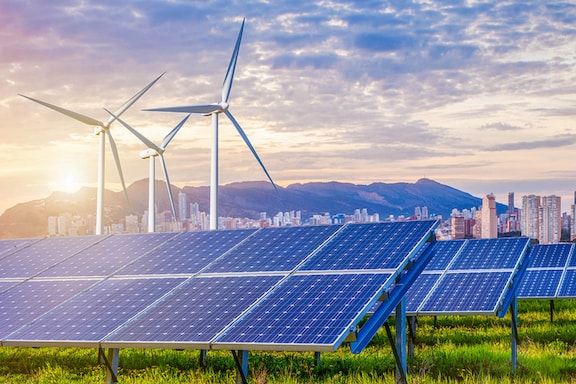Scientists had predicted that the then largest on-record iceberg in the world, B15, would take many generations to melt. But by March 2020 the massive iceblock, the size of Connecticut, had broken off the coast of Antarctica – a telling impact of climate change.
Ever since the climate change dialogue in the 1990s, modern civilization and its myriad goals have paid little heed to global warming. Now, three decades later – we have some reasons to celebrate and some more to ponder over. For instance, the 2022 Global Risks Report by the World Economic Forum lists climate action failure as the primary long-term risk that humanity will face in the coming decade.
Hardly a secret today, countries and large companies are hastening their net-zero goals with bold announcements to become carbon neutral in a not-too-distant future. The Glasgow Summit held last year witnessed an overpouring of similar concerns with countries pledging to stop the use of fossil fuels while recognizing the potential of alternate energy sources – whether conventional like gas or unconventional like wind, nuclear, etc.
While intentions today seem to be in the right place, there is a parallel need to ensure continuous action for holistic climate recovery. Bloomberg data shows that since the Paris Agreement in December 2015, renewable-energy producers have raised less than USD 160 billion in the debt markets, compared with USD 3.6 trillion for non-renewable energy producers. This year, the figures are less than USD 10 billion from bond sales and loans for renewable energy, while fossil-fuel companies raised USD 190 billion. The International Energy Agency (IEA) published a report to put these numbers in perspective. Charting out a path to net-zero emission in the global energy system by 2050, IEA says that the journey entails spending USD 820 billion on electric grids every year by 2030! The ask is steep but necessary.
Leaders fostering change
Today, companies and Governments have transitioned from being enthusiasts of decarbonization to becoming directors of the positive energy transition. 2022 onwards, massive economic stimulus packages to spur a comeback from the dins of the pandemic are expected. This needs complementary support for financing in clean energy that will aim to build more resilient and sustainable economies. Today, countries and companies are disrupting their energy mixes, attempting to integrate cleaner fuels, and phasing out high-emission sources—leading to a focus on the energy sector—given its 73.2% contribution to total global GHG emissions.
Especially in power, a key contributor to global emissions, interventions are necessary as demand is expected to only accentuate in the coming years. According to a report by PwC, the world needs USD 13 trillion to bolster power transmission and distribution networks across the globe through 2050. Here, a steady transition to hybrid round-the-clock power that functions with a mix of renewable sources powered by gas turbines can make a huge difference. The rapid integration of renewable power into the grid infrastructure creates its own set of challenges — especially in grid instability. Early adopters of renewables are realizing the need to strengthen grids with additional technologies to achieve critically required levels of flexibility, scalability, dependability, and to maintain grid inertia, the absence of which can result in frequent voltage or frequency fluctuations and blackouts.
Gas power has emerged as a driving solution to overcome this challenge. Offering the lowest carbon emissions per megawatt-hour of power generated among all fossil fuels, reaching as low as 310 grams of carbon dioxide per kilowatt-hour (gCO2 /kWh), versus about 547–935 gCO2 /kWh or more for liquid fuel plants, and 750–1,000 gCO2 /kWh for coalfired power plants – gas can act as a force multiplier for renewables, complementing alternative varying energy sources with reliable, on-demand electricity that can be ramped up or down rapidly.
Gas power plants can also be deployed relatively quickly, in as little as a matter of weeks to months especially when fast-power solutions are required powered by aero-derivative gas turbines. These many benefits are making gas a key vehicle to drive the energy transition. Climate change leaders, whether Governments, big industries or small companies, will do well to embrace the bridge role that gas can play towards developing an energy-efficient future.
For India
An update by the Government of India to the United Nations Framework Convention on Climate Change (UNFCC) states that the country is on track to meet its voluntary declaration of reducing the emissions intensity of GDP by 33 to 35 per cent by 2030. For a developing country like India, boosting economic growth is a priority that must balance well with policy decisions and financial assistance – starting today. If India is to grow its economy sustainably, key focus should be given to building, servicing, and maintaining the existing fleet of renewable energy assets.
Manufacturing and installing equipment for new onshore and offshore wind farms, servicing and repowering the global wind power fleet, building new hydropower assets, and rehabilitating the existing ones should be a priority. Ensuring grid resiliency and efficiency while adding renewable energy allows demand to match with supply and using Gas Power + RE hybrids can go a long way in achieving the same. Key focus should be given to maximizing asset performance through data analytics and hands-on field services, thereby, increasing the reliability and performance of critical electrical power transmission and distribution equipment.
Clean, flexible fossil energy is at the heart of the world’s growth, development and finally survival. If our systems are to deliver on the ambitious climate change agenda the world has set, the work must begin now. Change must be seen and experienced across micro and macro levels. Upcoming technology to burn Hydrogen for power generation and exploring ways to capture carbon and its utilization or sequestration can prove to be a game-changer. Finally, addressing energy transition is not an option or a potential in the pipeline; it is a necessity that alone will ensure the survival of our vision, mission, people and planet.
Views of the author are personal and do not necessarily represent the website’s views.
 Shilpa is a mechanical engineer with 20+ years of experience in both technical and business leadership roles in the automotive, aviation and gas power industries. She is currently the India Engineering Leader for GE Gas Power – her team plays a key role in the complete engineering lifecycle for the Gas Power business in the region and globally. Prior to this role, she was with GE Aviation for 6+ years leading teams in the Advanced Technology domains.
Shilpa is a mechanical engineer with 20+ years of experience in both technical and business leadership roles in the automotive, aviation and gas power industries. She is currently the India Engineering Leader for GE Gas Power – her team plays a key role in the complete engineering lifecycle for the Gas Power business in the region and globally. Prior to this role, she was with GE Aviation for 6+ years leading teams in the Advanced Technology domains.
This column appears in the March 2022 edition of our quarterly magazine. To grab your own copy, click here

